Abstract
Tilorone hydrochloride characteristically induces an unusually delayed and prolonged interferon response not commonly associated with other synthetic inducers. Maximum circulating interferon levels of 8,000 to 10,000 units/ml were detected 12 hr postinoculation and persisted for up to 30 hr after administration of tilorone. The fact that both oral and intraperitoneal injections of tilorone induce a similar response suggests that this delay is not based on the time required for adsorption from the gastrointestinal tract. In vitro, tilorone failed to induce detectable levels of interferon in either mouse peritoneal lymphocyte or macrophage cell cultures. Furthermore, interferon production could not be detected in the upper gastrointestinal tract after oral administration of tilorone. The striking suppression of interferon production in X-irradiated mice suggested that lymphatic tissue may be a source of interferon in response to tilorone. This concept was not supported, however, by experiments utilizing antilymphocyte serum (ALS). Tilorone induced comparable levels of interferon in both ALS-treated and control animals which had received normal serum, even though the ALS-treated mice had decreased spleen weights and peripheral lymphocyte counts. These data suggest that a radiosensitive cell population other than lymphocytes may be an important factor in the capacity of the host to produce interferon in response to tilorone. Mice which received repeated injections of tilorone developed a severe state of hyporeactivity. The degree of hyporeactivity was particularly striking when compared to that induced by polyinosinic acid:polycytidylic acid and emphasizes one of the major obstacles confronting interferon inducers as chemotherapeutic agents.
Full text
PDF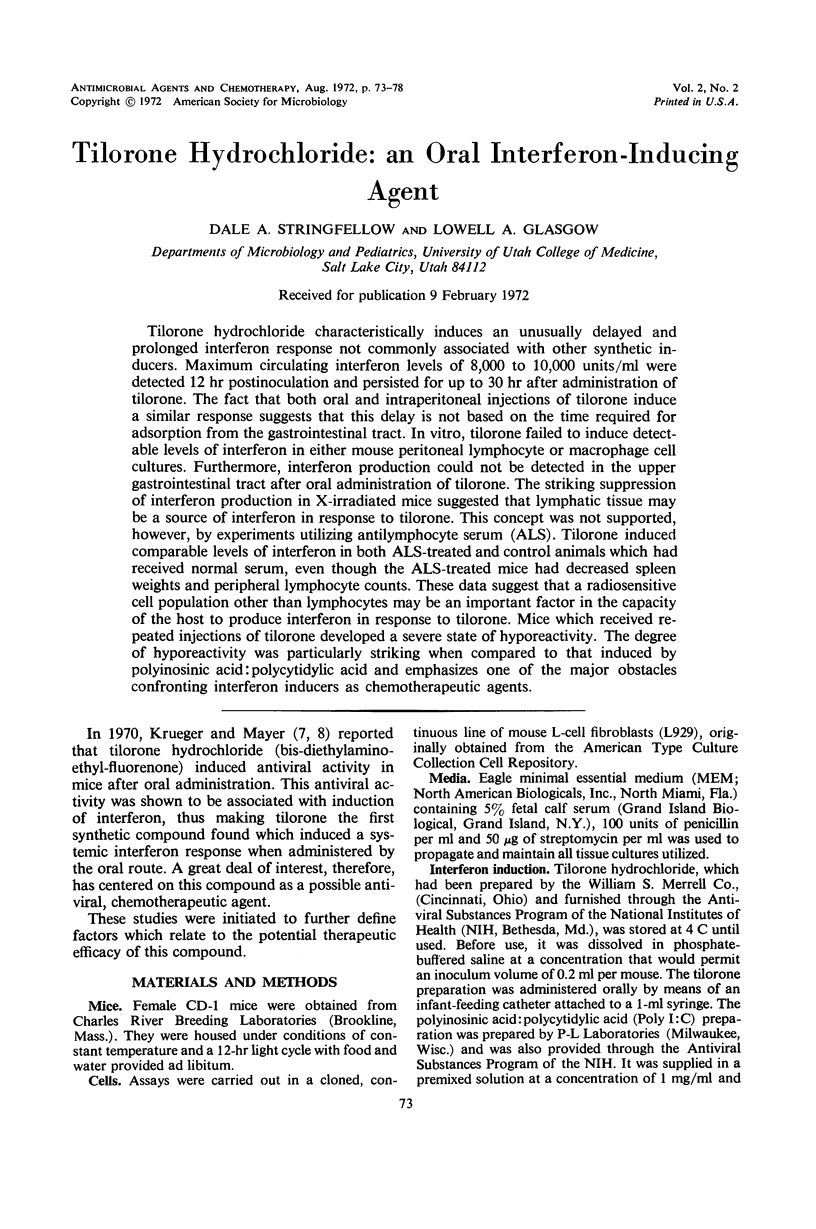
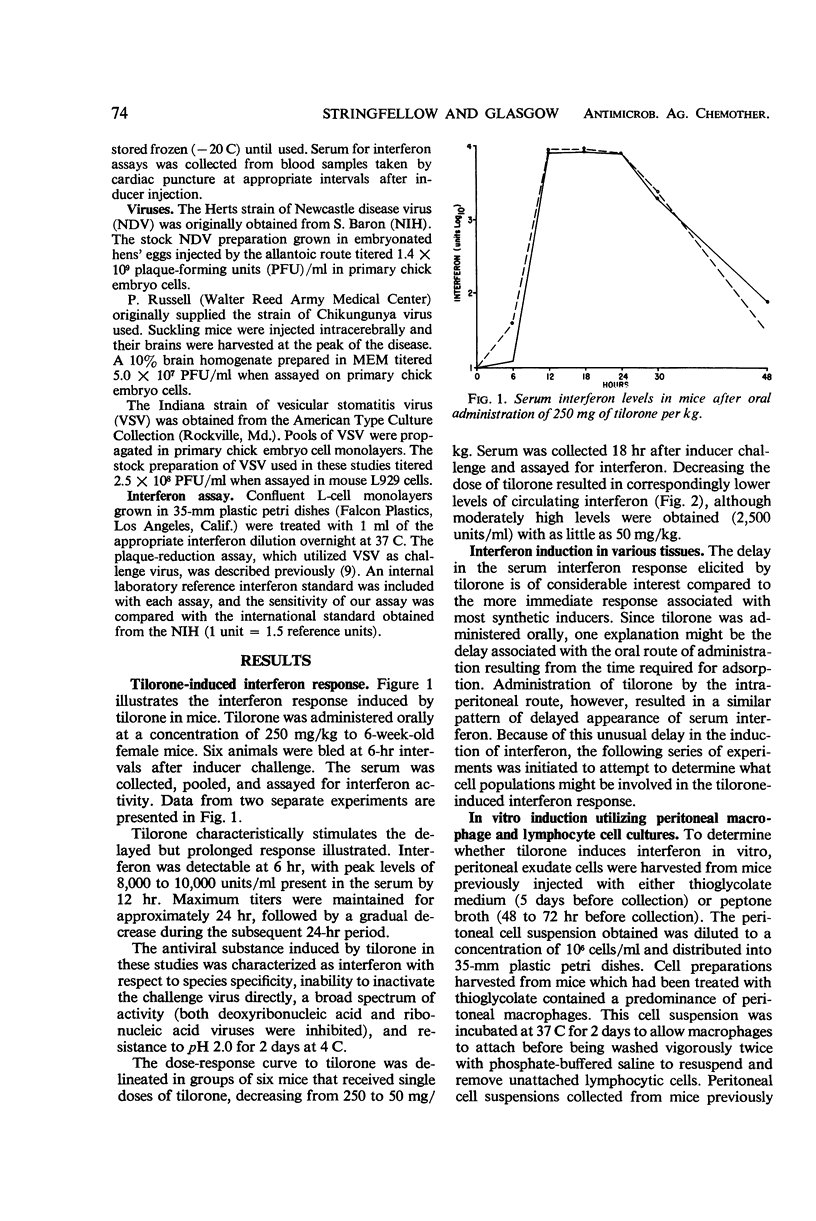
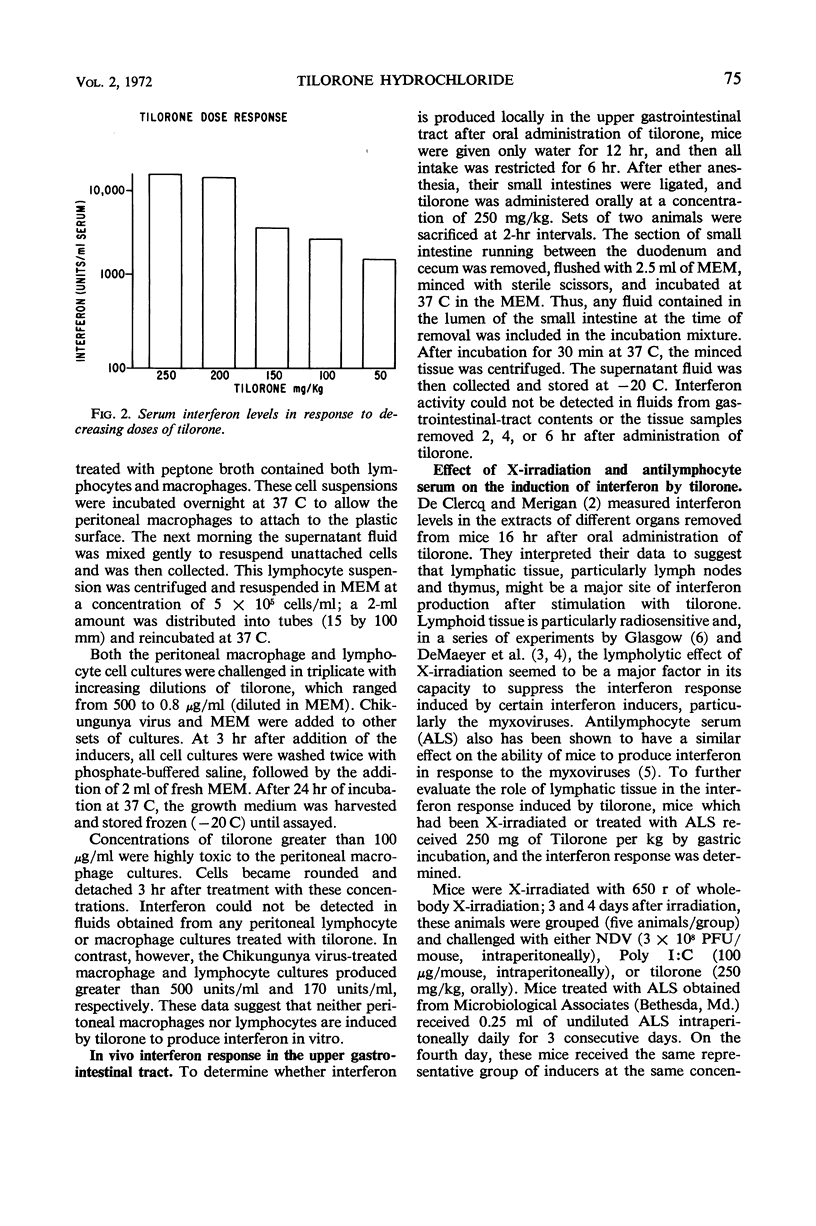
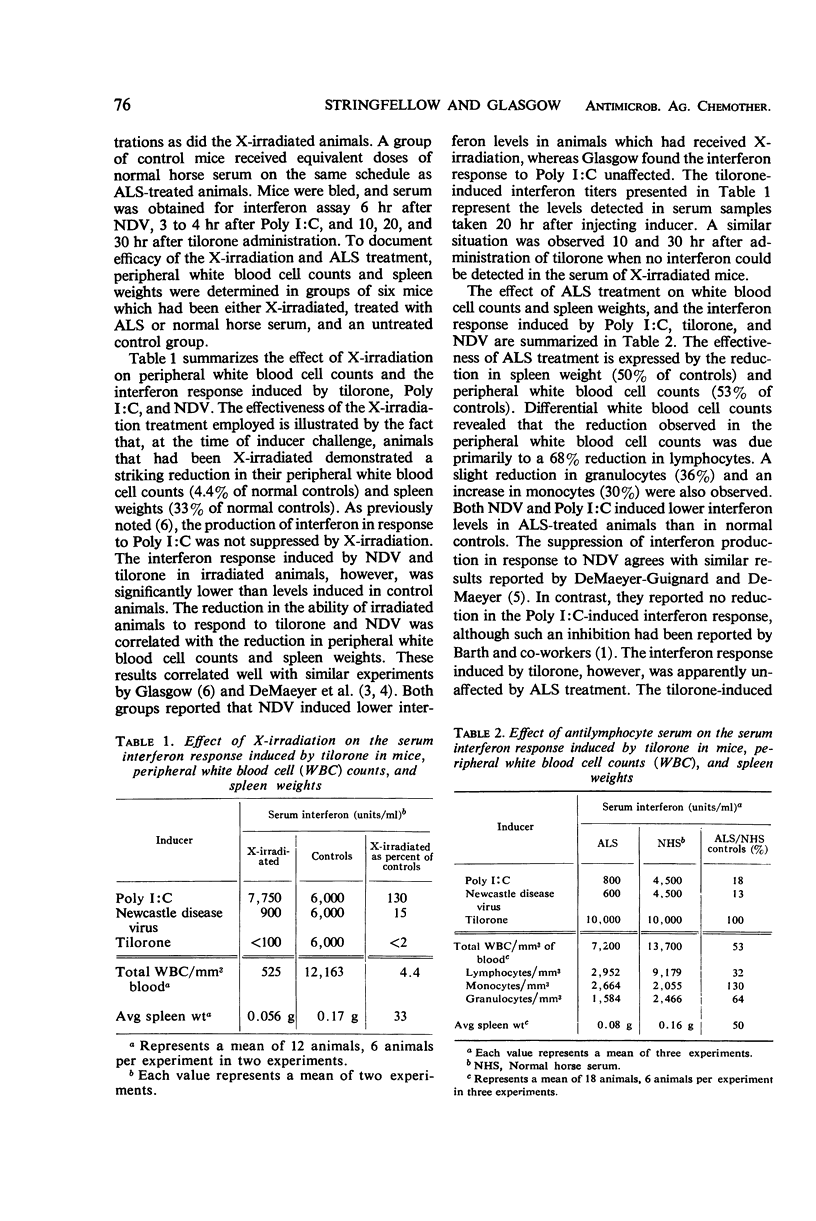
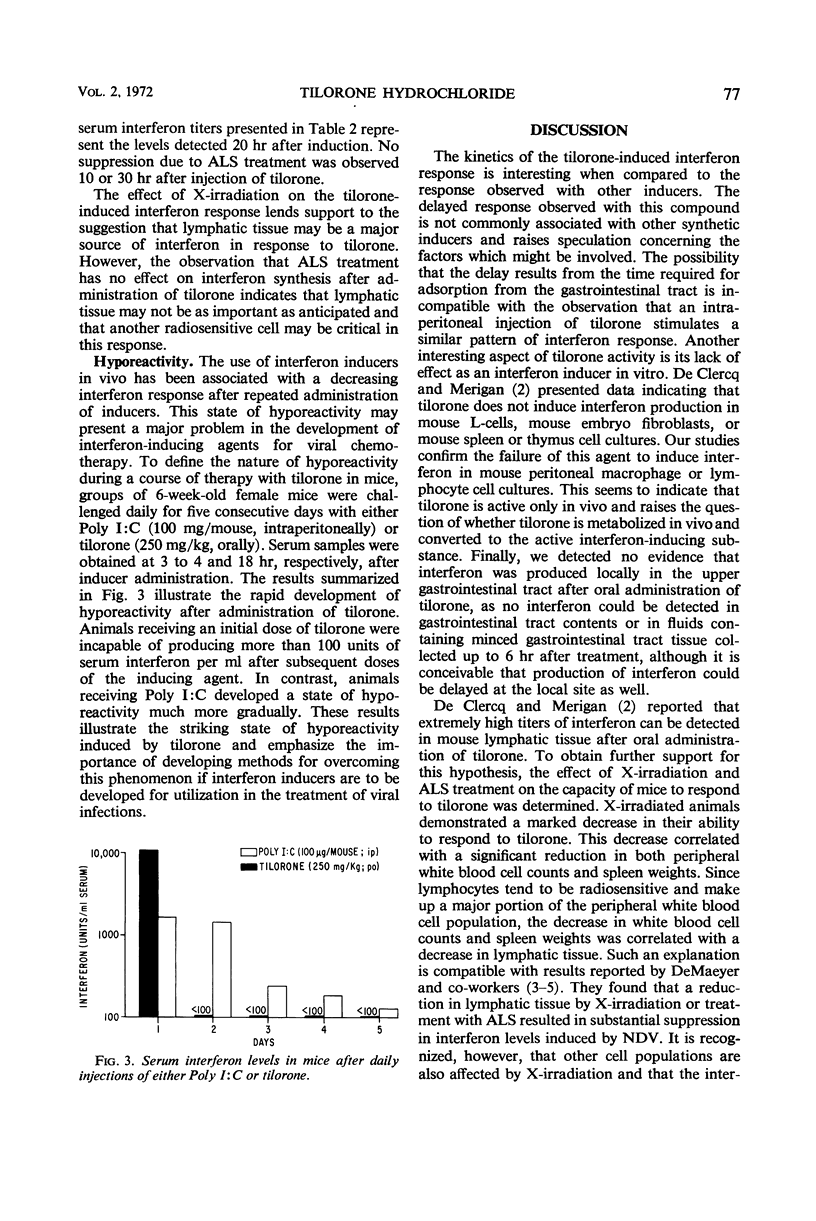
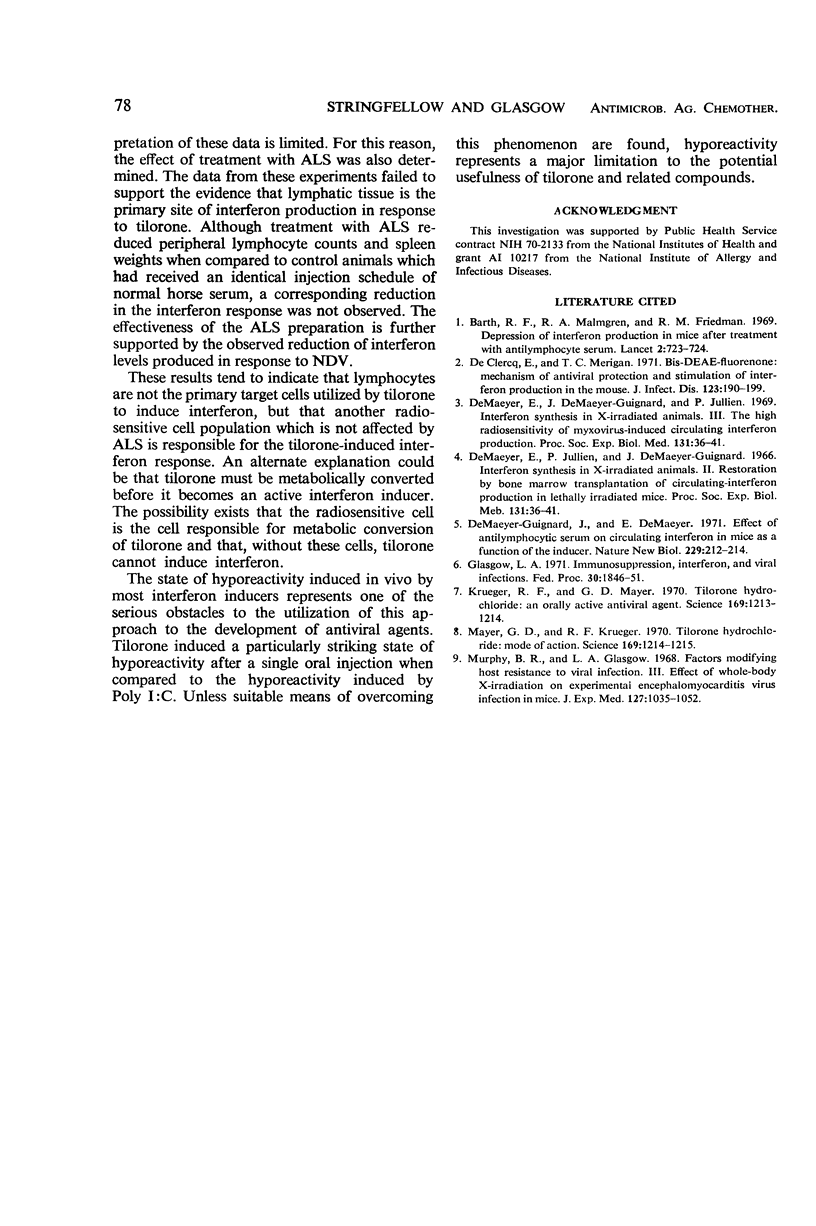
Selected References
These references are in PubMed. This may not be the complete list of references from this article.
- Barth R. F., Malmgren R. A., Friedman R. M. Depression of interferon production in mice after treatment with anti-lymphocyte serum. Lancet. 1969 Oct 4;2(7623):723–724. doi: 10.1016/s0140-6736(69)90431-0. [DOI] [PubMed] [Google Scholar]
- De Clercq E., Merigan T. C. Bis-DEAE-fluorenone: mechanism of antiviral protection and stimulation of interferon production in the mouse. J Infect Dis. 1971 Feb;123(2):190–199. doi: 10.1093/infdis/123.2.190. [DOI] [PubMed] [Google Scholar]
- De Maeyer E., De Maeyer-Guignard J., Jullien P. Inter- feron synthesis in x-irradiated animals. 3. The high radiosensitivity of myxovirus-induced circulating interferon production. Proc Soc Exp Biol Med. 1969 May;131(1):36–41. doi: 10.3181/00379727-131-33799. [DOI] [PubMed] [Google Scholar]
- Glasgow L. A. Immunosuppression, interferon, and viral infections. Fed Proc. 1971 Nov-Dec;30(6):1846–1851. [PubMed] [Google Scholar]
- Krueger R. E., Mayer G. D. Tilorone hydrochloride: an orally active antiviral agent. Science. 1970 Sep 18;169(3951):1213–1214. doi: 10.1126/science.169.3951.1213. [DOI] [PubMed] [Google Scholar]
- Mayer G. D., Krueger R. F. Tilorone hydrochloride: mode of action. Science. 1970 Sep 18;169(3951):1214–1215. doi: 10.1126/science.169.3951.1214. [DOI] [PubMed] [Google Scholar]
- Murphy B. R., Glasgow L. A. Factors modifying host resistance to viral infection. 3. Effect of whole body x-irradiation on experimental encephalomyocarditis virus infection in mice. J Exp Med. 1968 May 1;127(5):1035–1052. doi: 10.1084/jem.127.5.1035. [DOI] [PMC free article] [PubMed] [Google Scholar]
- de Maeyer-Guignard J., de Maeyer E. Effect of antilymphocytic serum on circulating interferon in mice as a function of the inducer. Nat New Biol. 1971 Feb 17;229(7):212–214. doi: 10.1038/newbio229212a0. [DOI] [PubMed] [Google Scholar]


